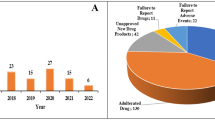Abstract
Traditional pharmacy compounding involves the modification of a dosage form to fit the needs of a patient, as prescribed by the patient’s physician, and serves a vital need within the health community. Unites States Pharmacopeia–National Formulary (USP-NF) General Chapter <797>, titled “Pharmaceutical Compounding—Sterile Preparations,” is the gold standard to which modern-day pharmacists compounding sterile products are held. In this article, the FDA 483 inspection reports received by sterile compounding pharmacies were divided into 2 categories: facilities in the United States that require compliance with USP <797> and those that do not require compliance with USP <797>. Results revealed no association between the number or category of 483 comments and state requirements to comply with USP <797>. The impact of voluntary registration of compounding pharmacies with FDA in accordance with the 2013 Drug Quality and Security Act (DQSA) has yet to be determined. The author recommends a national database of all pharmacy compounding facilities that lists the types of manufacturing in each facility to increase transparency and target audits, as well as the institution of rewards for quality in the generic industry to help avoid drug shortages.
Similar content being viewed by others
References
Lupkin S. Fungal meningitis: anatomy of an outbreak [video]. ABC News. November 8, 2012. http://abcnews.go.com/Health/fungal-meningitis-anatomy-outbreak/story?id=17667058#.Ub5RainD_IV.
CDC. Multistate outbreak of fungal meningitis and other infections. http://www.cdc.gov/hai/outbreaks/meningitis.html. Accessed December 2013.
CDC. CDC Clinician Call: Outbreak of fungal meningitis and other infections. http://www.cdc.gov/hai/outbreaks/clinicians/pdf/clinician-call-transcript-0313.pdf. Published March 2013.
Woodcock J, Wosinska M. Economic and technological drivers of generic sterile injectable drug shortages. Clin Pharmacol Ther. 2013;93(2):170–176.
H.R. 5256, Pharmacy Compounding Preservation Act of 1994, introduced October 7, 1994, 1 co-sponsor; H.R. 598, Pharmacy Compounding Preservation Act of 1994, introduced January 20, 1995, 141 co-sponsors; H.R. 3199, Drug and Biological Products Reform Act of 1996, introduced March 29, 1996, 205 co-sponsors; H.R. 1060, Pharmacy Compounding Act, introduced March 13, 1997, 152 co-sponsors; H.R. 1411, Drug and Biological Products Modernization Act of 1997, introduced April 23, 1997, 16 co-sponsors.
US Department of Health and Human Services. Testimony on Protecting the Nation’s Safety and Health by David A. Kessler, MD, Commissioner, Food and Drug Administration, US Department. of Health and Human Services, before the House Committee on Commerce, Subcommittee on Health and Environment. May 1, 1996. http://www.hhs.gov/asl/testify/t960501a.html.
US Food and Drug Administration The fungal meningitis outbreak: could it have been prevented? Statement of Margaret A. Hamburg, MD, Commissioner of Food and Drugs, Food and Drug Administration, Department of Health and Human Services, before the Subcommittee on Oversight and Investigations, House Committee on Energy and Commerce, US House of Representatives. November 14, 2012. http://www.fda.gov/NewsEvents/Testimony/ucm327664.htm.
US Food and Drug Administration. Registered outsourcing facilities. http://www.fda.gov/Drugs/GuidanceComplianceRegulatoryInformation/PharmacyCompounding/ucm378645.htm. Accessed December 2013.
US Food and Drug Administration. Reforming the drug compounding regulatory framework. Statement of Janet Woodcock, MD, Director, Center for Drug Evaluation and Research, Food and Drug Administration, Department of Health and Human Services, before the Subcommittee on Health, Committee on Energy and Commerce, US House of Representatives. July 16, 2013. http://www.fda.gov/NewsEvents/Testimony/ucm360945.htm.
Kastango E, Bradshaw BD. USP chapter 797: establishing a practice standard for compounding sterile preparations in pharmacy. Am J Health Syst Pharm. 2004;61(18):1928–1938.
US Food and Drug Administration. Compounding Quality Act: Title I of the Drug Quality and Security Act of 2013. http://www.fda.gov/Drugs/GuidanceComplianceRegulatoryInformation/PharmacyCompounding/default.htm. Accessed December 2013.
Author information
Authors and Affiliations
Corresponding author
Rights and permissions
About this article
Cite this article
Wilson, M. Sterile Compounding Pharmacies: States That Do and Do Not Require Compliance With USP <797> Versus FDA 483s. Ther Innov Regul Sci 50, 279–303 (2016). https://doi.org/10.1177/2168479016636417
Received:
Accepted:
Published:
Issue Date:
DOI: https://doi.org/10.1177/2168479016636417



